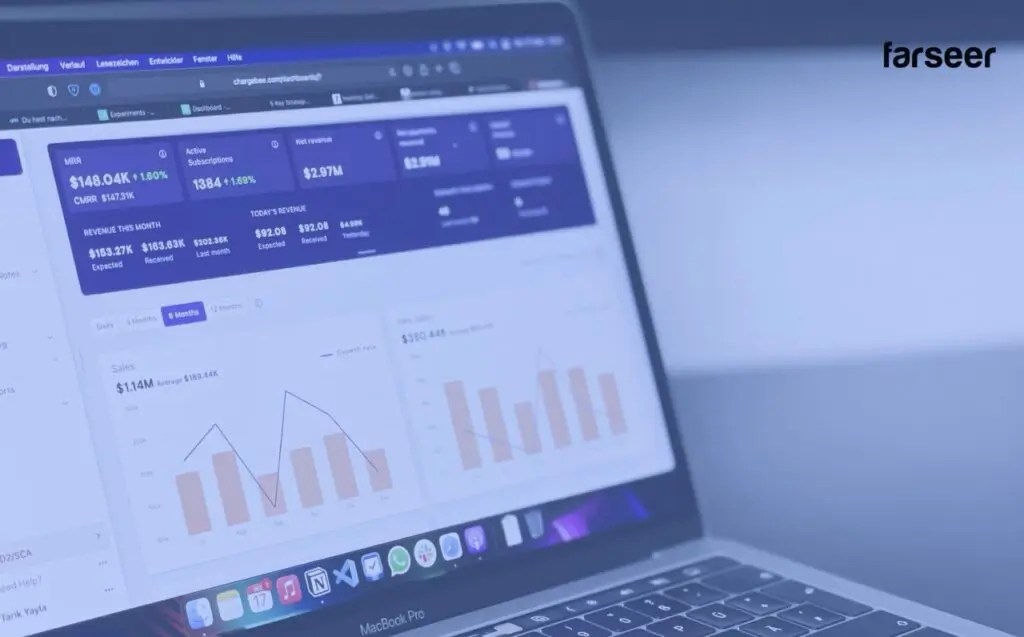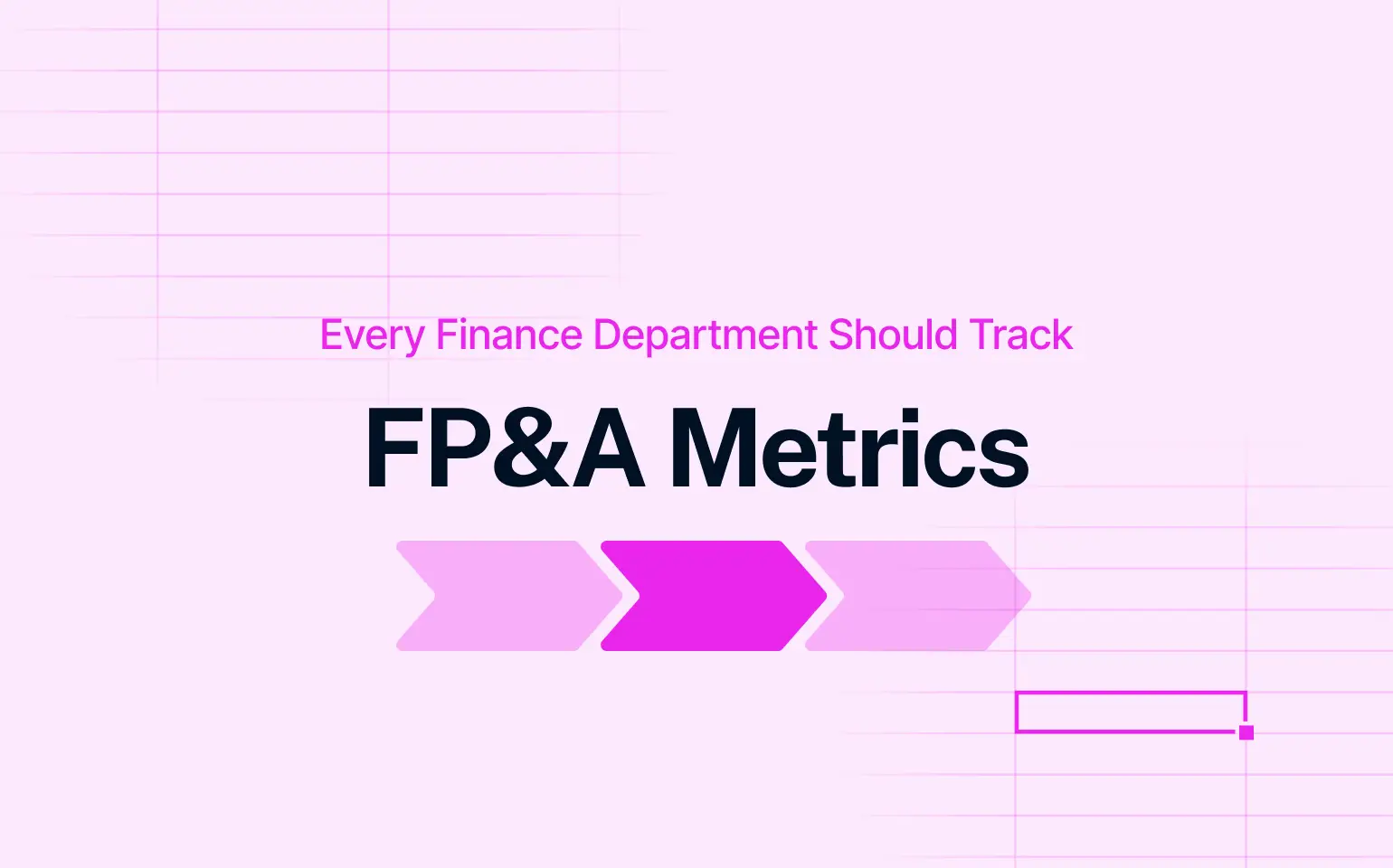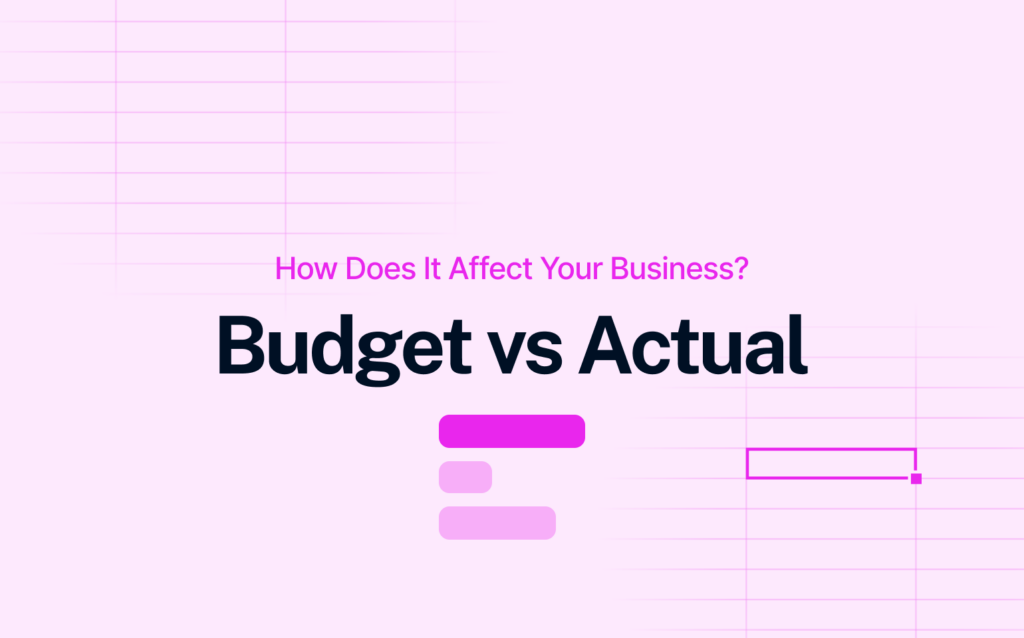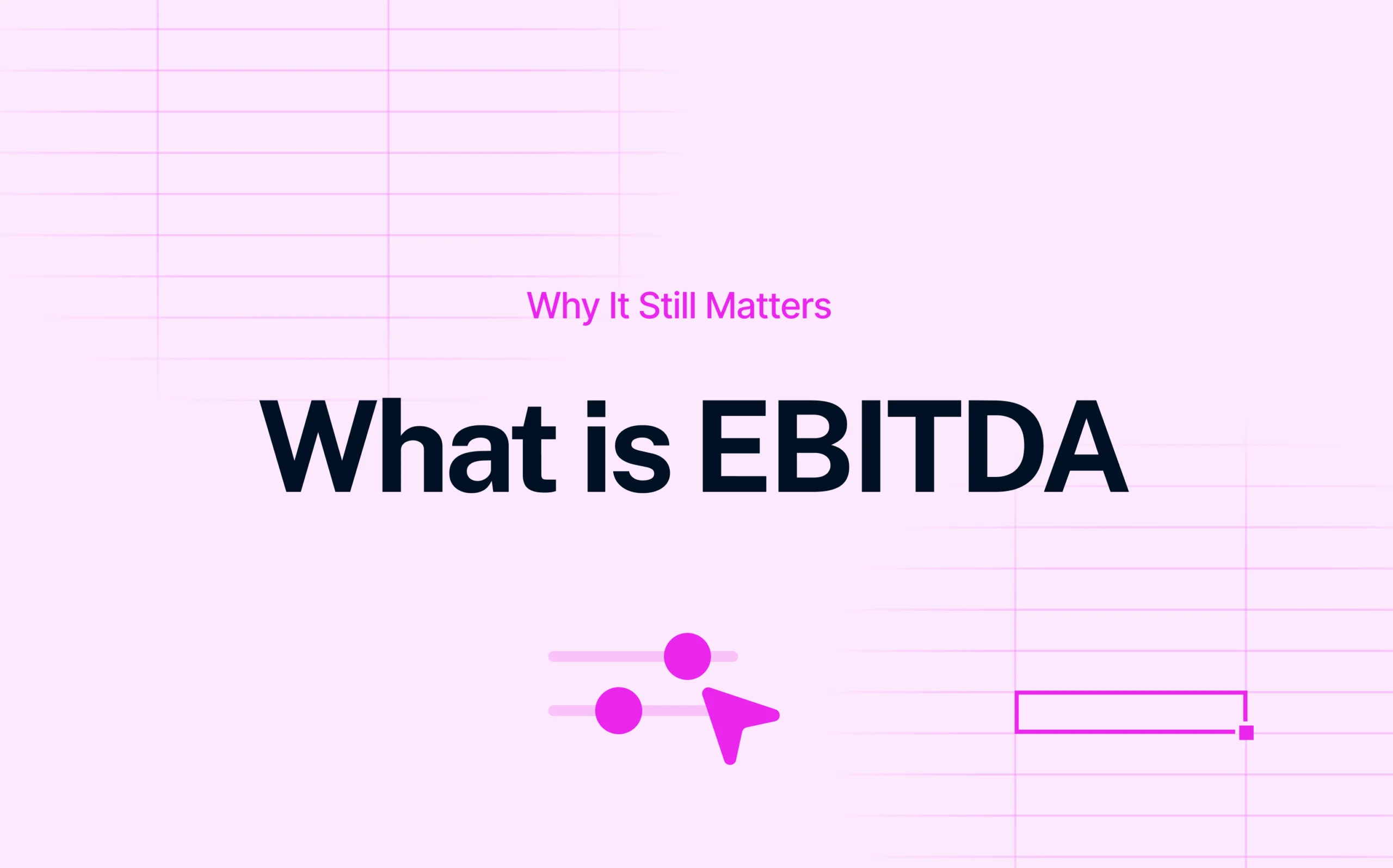FP&A metrics are the financial and operational indicators that help measure performance, guide planning, and support business decisions. They form the link between strategy and execution covering areas like profitability, forecast accuracy, working capital, and budget variances.
Read FP&A Software for Modern Finance Teams: Compare the Best Tools in 2025
Although they are very useful and needed, there is a common problem in most organizations – they track too many of them. Finance teams spend hours updating dashboards filled with 20 or 30 KPIs, but only a handful ever shape real decisions. The result: leadership still relies on gut instinct or partial data, while the insights that matter most get buried under reporting noise.
This is why many FP&A metrics fall short: they measure activity, not impact.
The good news? By focusing on a smaller set of metrics, finance teams can shift from simply reporting results to actively leading the business.
Metric Overload vs Decision Relevance
One of the biggest challenges in FP&A isn’t the lack of data, but the excess of it. Finance teams often fall in a pressure trap to track and report on every possible metric, hoping that more information will lead to better decisions. In reality, the opposite happens: too many KPIs weaken focus, slow down reporting cycles, and make it harder to see what really matters.
This “metric overload” shows up in two common ways:
- Bloated dashboards: Dozens of charts and tables that look impressive but rarely spark action.
- Reporting for reporting’s sake: Teams spend days reconciling numbers that no one outside finance ever uses.
The key question to ask about any FP&A metric is simple: If this number changes, does it trigger a decision?
If the answer is no, then it’s not a decision-relevant FP&A metric, it’s just background noise.
Focusing on decision relevance doesn’t mean ignoring detail. It means giving more visibility to the handful of metrics that consistently inform strategic choices, like cash flow, profitability, or forecast accuracy, while keeping everything else in the background.
FP&A Metrics That Should Drive Business Decisions
When you cut through the noise, these six metrics consistently help finance teams influence decisions and guide strategy. Here’s what each means in practice:
EBITDA Margin
As a profitability metric, EBITDA margin shows how much operating profit is generated as a percentage of revenue. Unlike net profit, it strips out financing and tax effects, giving a clean view of operational efficiency.
Why it matters: It highlights whether the core business model is sustainable.
Practical use: A drop in EBITDA margin can guide cost optimization programs or trigger a pricing review.
Forecast Accuracy
Forecast accuracy measures how close financial projections are to actual results. It’s not just a KPI for the FP&A team, it’s a reflection of the company’s ability to plan realistically.
Why it matters: Consistently poor accuracy signals that assumptions are off or data is unreliable.
Practical use: Tying forecast accuracy targets to business units can improve accountability and planning discipline.
For a practical framework, explore our post on 3-9 Forecasting – a balanced approach that improves forecast accuracy without overcomplicating the process.

Cash Conversion Cycle (CCC)
The CCC, one of FP&A metrics, shows how quickly a company turns inventory and receivables into cash while managing payables.
Why it matters: Liquidity can be strained even when revenue is growing. CCC makes this risk visible.
Practical use: Shortening CCC by just a few days can free up significant working capital crucial in industries with long supply chains like manufacturing or pharma.
This metric often ties directly into liquidity and consolidation challenges we explained in How to Prepare Consolidated Financial Statements.
Working Capital Efficiency
This measures how well receivables, payables, and inventory are balanced to support operations without tying up excess cash.
Why it matters: Inefficient working capital eats into liquidity and increases financing costs.
Practical use: Tracking DSO (days sales outstanding) and DPO (days payables outstanding) separately highlights where to tighten collection or renegotiate terms.
Return on Invested Capital (ROIC)
ROIC evaluates how effectively the company uses its capital to generate returns. It’s the ultimate check on whether money is being deployed wisely.
Why it matters: High revenue growth means little if capital is being wasted.
Practical use: Comparing ROIC across projects or business units supports smarter allocation and divestment decisions.
Budget vs. Actual Variance
This measures the gap between planned and actual results across revenue, costs, and profit.
Why it matters: Variances flag early when plans are drifting off course.
Practical use: Instead of explaining every minor variance, focus reviews on the few that impact decisions – e.g., a material deviation in raw material costs that threatens EBITDA.
Focusing on these six metrics gives finance leaders a sharper view of profitability, liquidity, and capital allocation without drowning in unnecessary data. The rest of the KPIs aren’t useless, but they should sit in the background as supporting detail, not as headline numbers. In the next section, we’ll look at which metrics usually waste time and why trimming them out of your dashboards is just as important as choosing the right ones.
What to Stop Tracking (or Track Less)
Not every KPI deserves space on your dashboard. Many of the metrics finance teams spend time on look useful, but rarely change how decisions are made. These “vanity metrics” can clutter reporting, drain resources, and distract leadership from the signals that matter most.
Here are a few common low value metrics:
- Revenue growth YoY without context
- Gross margin without allocation detail
- Expense line tracking at excessive granularity
- Headcount ratios with no productivity link
- One-off KPI experiments
The test for every metric is simple: If this number changes, would it trigger a decision? If the answer is no, it’s better left out or moved into supporting detail.
By cutting down on low-impact KPIs, finance teams free up time to improve the quality of analysis behind the metrics that matter.
How to Connect Metrics to Decision-Making
Here are three ways to make that connection:
- Align metrics with decision frequency
Not every KPI should be reviewed at the same pace.
• Daily/weekly: liquidity checks like cash position or working capital turns.
• Monthly: profitability and forecast accuracy.
• Quarterly: capital allocation and ROIC.
Matching review frequency with decision cadence avoids over-reporting and keeps leaders focused. - Define thresholds that trigger action
A metric should not just be a number, it should have a rule.
• Example: “If forecast accuracy drops below 85%, we revisit planning assumptions.”
• Example: “If working capital days exceed target, procurement must renegotiate supplier terms.”
This creates accountability and ensures numbers don’t just get noted but acted on. - Make metrics visible in the right format
Dashboards should highlight exceptions, not just tables of data. Red flags, variance alerts, and simple visual trends make it clear where attention is needed. Instead of explaining 30 numbers, you point out 3 that require decisions.
When metrics are structured this way, finance teams stop being just reporters of performance. They become enablers of faster, better business choices.

Focus on What Moves the Business
Most finance teams don’t need more metrics; they need better ones. By cutting dashboard clutter and focusing on six decision-critical FP&A metrics: EBITDA margin, forecast accuracy, cash conversion cycle, working capital efficiency, ROIC, and budget vs. actual variance, finance can shift from reporting to shaping business outcomes.
The experience of companies like EOS Matrix shows that when planning is centralized and simplified, finance leaders spend less time chasing numbers and more time driving decisions.
If your dashboards are full but your decisions aren’t getting easier, it’s time to rethink which metrics really deserve attention.
Đurđica Polimac is a former marketer turned product manager, passionate about building impactful SaaS products and fostering connections through compelling content.




